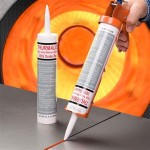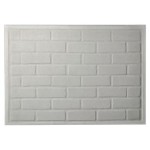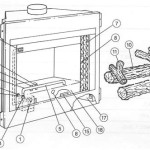How To Clean Fireplace Brick And Mortar
The fireplace, a focal point in many homes, provides warmth and ambiance. Over time, however, soot, creosote, and general grime accumulate on the brick and mortar, diminishing the fireplace's aesthetic appeal. Regular cleaning is essential not only to maintain the fireplace's appearance but also to prevent potential hazards associated with creosote buildup. This article provides a comprehensive guide on how to effectively clean fireplace brick and mortar, restoring its original beauty and ensuring a safer home environment.
Before commencing any cleaning procedure, preparation is paramount. This involves safeguarding the surrounding area and assembling the necessary tools and cleaning agents. Neglecting preparation can lead to avoidable messes and potential damage to nearby surfaces.
The first step in preparation is to protect the floor and surrounding furniture. This can be achieved by laying down drop cloths or plastic sheeting. Securing the edges of the sheeting with painter's tape is recommended to prevent slippage and ensure complete coverage. Consider removing any nearby rugs or furniture that could be easily soiled during the cleaning process. Additionally, adequate ventilation is crucial. Open windows and doors to provide airflow and minimize the inhalation of dust and cleaning fumes. If possible, use a fan to further enhance ventilation.
Gathering the necessary tools is the next crucial step. These tools typically include a stiff-bristled brush (a wire brush may be needed for stubborn stains), a sponge, a bucket, a putty knife or scraper, safety goggles, and gloves. The choice of cleaning agents will depend on the severity of the stains and the type of brick and mortar. Mild detergents, specialized brick cleaners, and even household items like vinegar and baking soda can be effective cleaning solutions. Ensure that the chosen cleaning agent is compatible with the fireplace materials to avoid damage or discoloration. Always wear safety goggles and gloves to protect the eyes and skin from irritants and harsh chemicals.
Key Point 1: Selecting the Appropriate Cleaning Solution
Choosing the right cleaning solution is essential for effective cleaning without damaging the brick and mortar. Various options exist, each with its own advantages and disadvantages. Understanding the properties of different cleaning agents is crucial for making an informed decision.
Mild detergents, such as dish soap mixed with warm water, are a good starting point for lightly soiled fireplaces. This solution is gentle and unlikely to cause damage. However, it may not be effective on heavily stained areas. Apply the soapy water with a sponge and scrub gently with a brush. Rinse thoroughly with clean water.
For more stubborn stains, specialized brick cleaners are often necessary. These cleaners are specifically formulated to remove soot, creosote, and other fireplace grime. Always read and follow the manufacturer's instructions carefully. Some brick cleaners can be harsh and may require dilution. Test the cleaner on an inconspicuous area of the fireplace first to ensure that it does not cause discoloration or damage. Apply the cleaner with a brush or sponge, allow it to sit for the recommended time, and then scrub and rinse thoroughly.
Natural cleaning solutions, such as vinegar and baking soda, can also be effective alternatives. Vinegar, a mild acid, can help to dissolve mineral deposits and grime. Mix equal parts of white vinegar and water in a spray bottle. Spray the solution onto the brick and mortar, let it sit for a few minutes, and then scrub with a brush. Rinse thoroughly with clean water. Baking soda, a mild abrasive, can help to remove stains and odors. Make a paste of baking soda and water, apply it to the stained areas, let it sit for several hours or overnight, and then scrub and rinse thoroughly.
Regardless of the chosen cleaning solution, always prioritize safety. Ensure adequate ventilation, wear protective gear, and avoid mixing different cleaning agents, as this can create dangerous fumes. When using strong chemical cleaners, consider wearing a respirator to further protect against inhalation of harmful substances.
Key Point 2: Cleaning Techniques for Brick and Mortar
Proper cleaning techniques are crucial for effectively removing soot and grime from brick and mortar without causing damage. The approach will vary depending on the type of staining and the condition of the fireplace. Employing the correct techniques ensures optimal results and helps to prolong the life of the fireplace.
Begin by removing loose debris, such as ash and soot, with a brush or vacuum cleaner. This initial step simplifies the cleaning process and prevents the spread of dust and grime. Next, apply the chosen cleaning solution to the brick and mortar. For vertical surfaces, start at the top and work downwards to prevent streaking.
Scrub the brick and mortar using a stiff-bristled brush. Apply moderate pressure and work in small sections. For stubborn stains, use a wire brush, but be cautious, as excessive scrubbing with a wire brush can damage the brick and mortar. Pay particular attention to the mortar joints, as these areas tend to accumulate more grime. Use a putty knife or scraper to carefully remove any hardened deposits or buildup, being mindful not to gouge or chip the brick or mortar.
After scrubbing each section, rinse thoroughly with clean water. Use a sponge or clean cloth to wipe away any residual cleaning solution and loosened grime. Repeat the cleaning and rinsing process as necessary until the brick and mortar are clean. For heavily soiled fireplaces, multiple applications of the cleaning solution may be required.
Once the cleaning is complete, allow the brick and mortar to dry completely. This may take several hours or even overnight, depending on the humidity and ventilation. Ensure that the fireplace is completely dry before lighting a fire. Applying a sealant designed for brick and mortar can help to protect the fireplace from future staining and make it easier to clean in the future. When applying sealant, follow the manufacturer's instructions carefully.
Key Point 3: Addressing Specific Stain Types
Different types of stains require specific cleaning methods. Identifying the type of stain is crucial ensuring successful removal without damaging the materials. Common fireplace stains include soot, creosote, rust, and efflorescence. Each of these requires a tailored approach.
Soot stains are the most common type of fireplace stain, resulting from incomplete combustion of wood. As described previously, mild detergents, specialized brick cleaners and natural solutions can be used effectively. For soot, the key is to scrub thoroughly and rinse repeatedly. Consider using a wet/dry vacuum to remove excess soot after scrubbing.
Creosote stains are a more serious concern, as creosote is a flammable substance that can contribute to chimney fires. Specialized creosote removers are available at most hardware stores. These removers typically contain solvents that break down the creosote, making it easier to remove. Always follow the manufacturer's instructions carefully when using creosote removers. In severe cases, professional chimney cleaning may be necessary to remove creosote buildup.
Rust stains can occur if metal fireplace accessories, such as andirons or grates, are left in contact with the brick. Rust stains can be removed using a solution of oxalic acid. Mix oxalic acid with water according to the manufacturer's instructions and apply the solution to the stained area. Let it sit for the recommended time, and then scrub and rinse thoroughly. Oxalic acid is a strong chemical, so wear appropriate protective gear and ensure adequate ventilation. Always test the solution on an inconspicuous area first to ensure that it does not cause discoloration or damage.
Efflorescence appears as a white, powdery deposit on the brick and mortar. It is caused by soluble salts in the masonry materials migrating to the surface. Efflorescence can be removed with a stiff brush and water. In more severe cases, a solution of muriatic acid diluted with water can be used. Muriatic acid is a strong acid, so wear appropriate protective gear and ensure adequate ventilation. Always test the solution on an inconspicuous area first to ensure that it does not cause damage. After cleaning, consider applying a sealant to prevent future efflorescence.
By understanding the specific types of stains and employing the appropriate cleaning methods, can effectively restore the beauty of fireplace brick and mortar. Regular maintenance and prompt attention to stains will help to keep the fireplace looking its best and ensure a safer home environment.
Regular maintenance is essential for preserving the cleanliness and longevity of fireplace brick and mortar. A proactive approach to cleaning will minimize the buildup of soot and grime, making future cleaning tasks easier and less time-consuming. Sweep or vacuum the fireplace regularly to remove loose ash and debris. Promptly address any spills or stains to prevent them from setting. Consider applying a protective sealant to the brick and mortar to protect it from future staining and make it easier to clean. By adopting a consistent maintenance routine, the fireplace will remain a beautiful and functional focal point in the home for years to come.

How To Clean Fireplace Brick Soot Marks And Grime Hometalk

Mortar Wash Brick Fireplace Makeover Dimples And Tangles

Mortar Wash Brick Fireplace Makeover Dimples And Tangles

How To Clean A Brick Fireplace The Family Handyman

How To Clean Fireplace Bricks Simple Practical Beautiful

Mortar Wash Brick Fireplace Tutorial Cottage Flip Update Jenna Sue Design

How To Clean Fireplace Bricks Cleanup Team

Mortar Wash Brick Fireplace Makeover Dimples And Tangles

How To Clean Fireplace Brick Soot Marks And Grime Hometalk

How To Clean Brick Fireplace Kitchen Infinity








